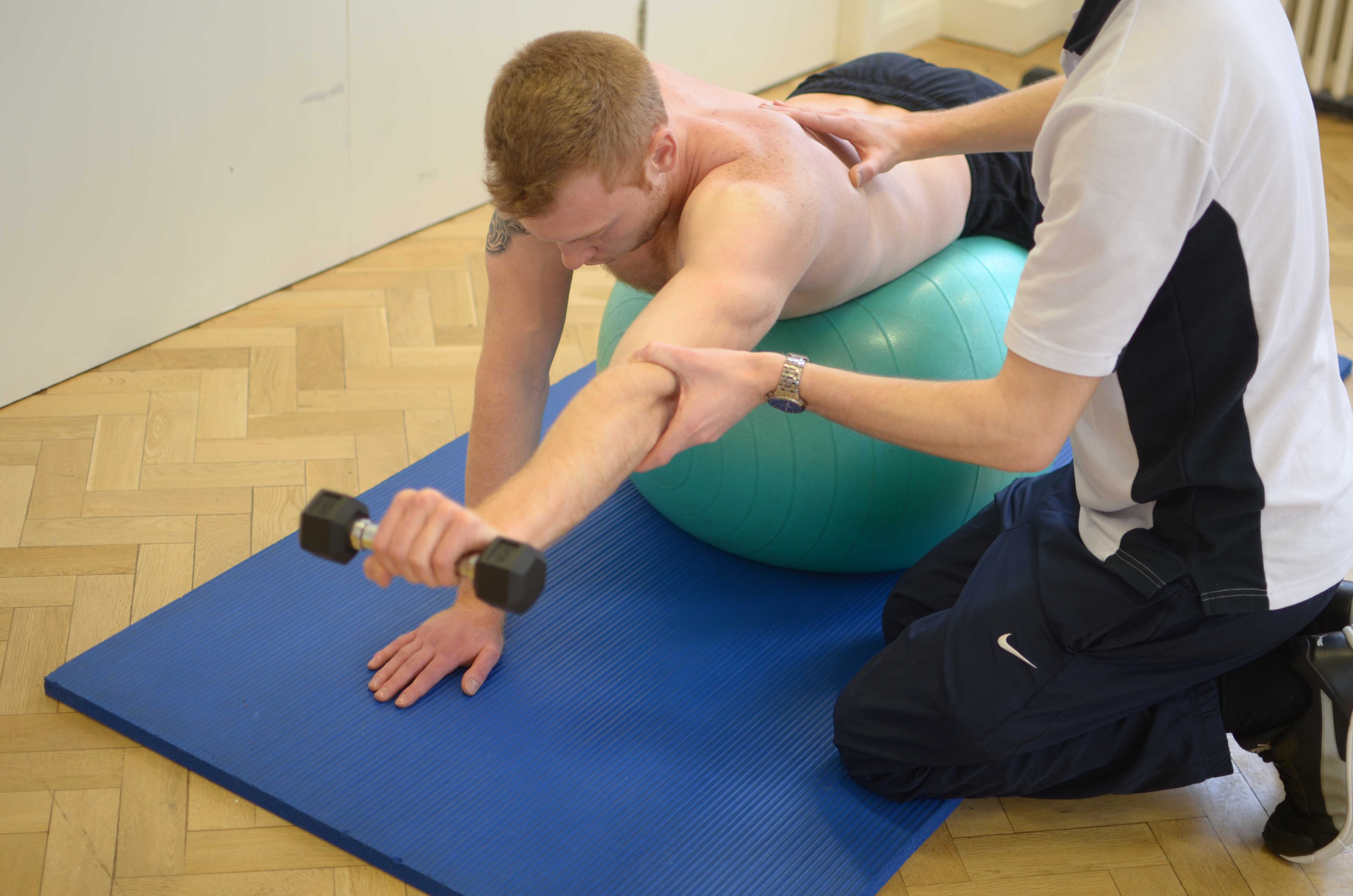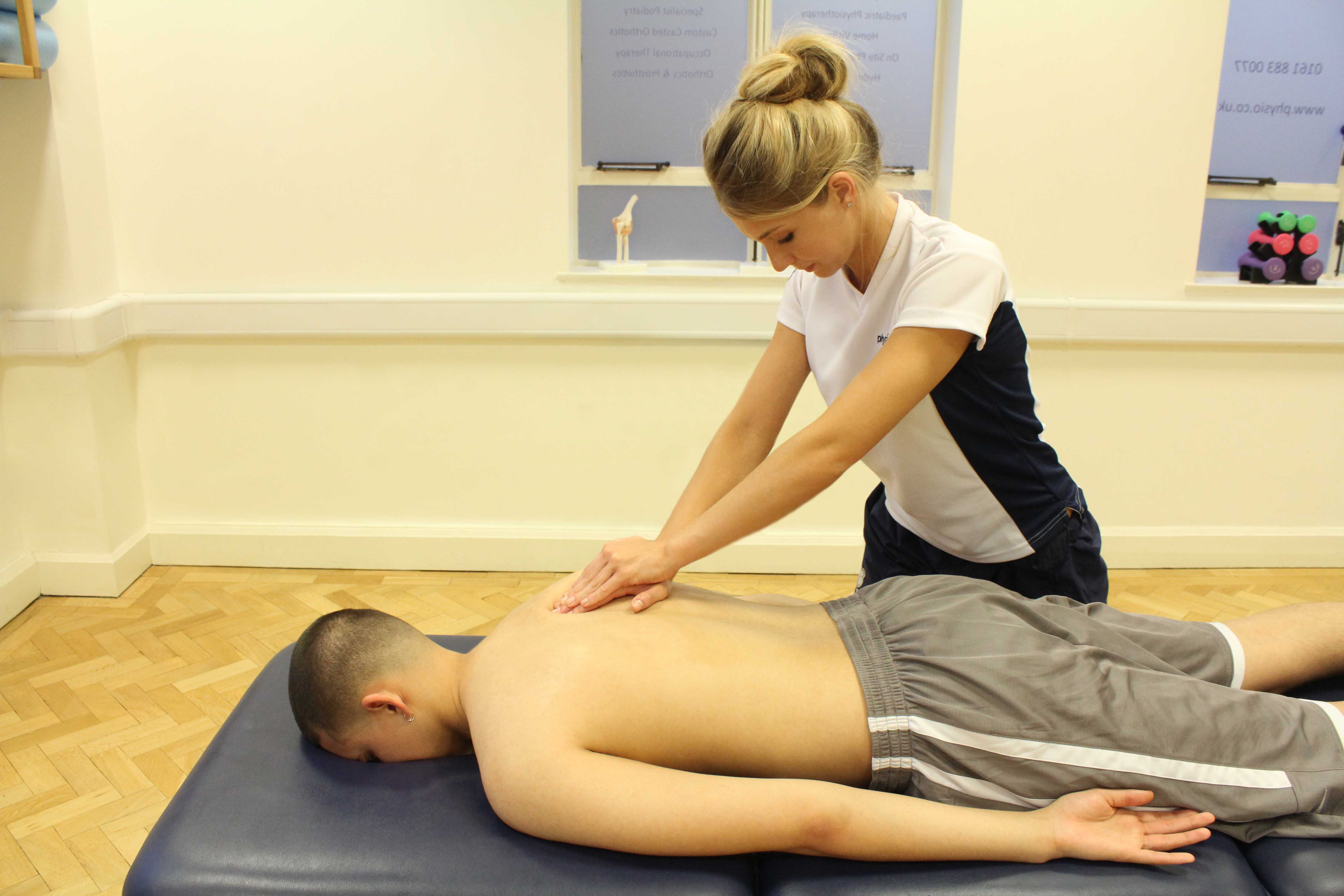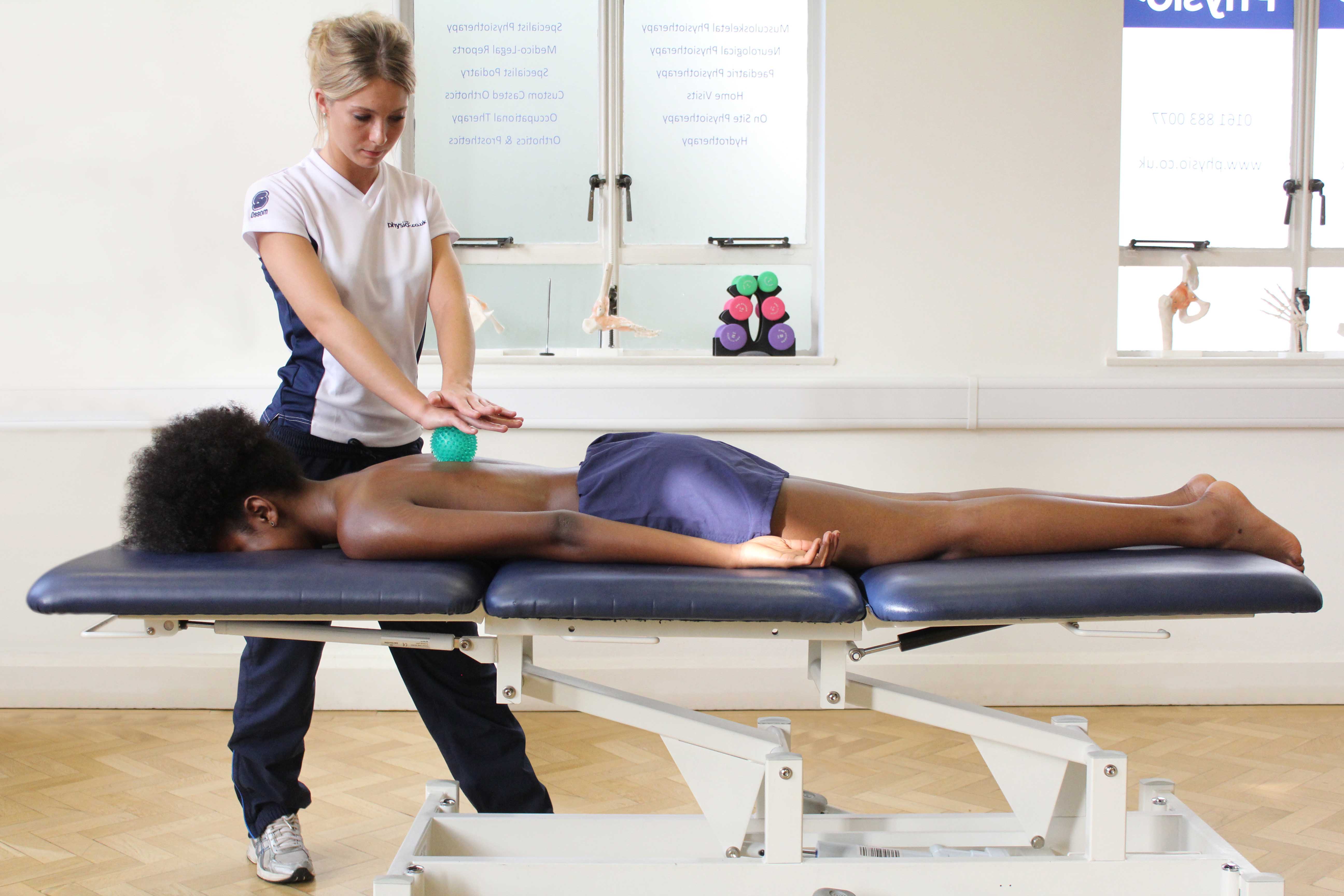What is Scheuermann’s disease?
Scheuermann’s disease is a postural deformity affecting the spine. It is more a condition rather than a disease and is often seen in younger athletes. Physiotherapy is important when treating Scheuermann’s disease.
 Above: Progressive strengthening exercises isolating the upper back muscles
Above: Progressive strengthening exercises isolating the upper back musclesHow does Scheuermann’s disease happen?
The cause of Scheuermann’s disease is unknown.
What are the symptoms of Scheuermann’s disease?
Scheuermann’s disease produces mild to moderate pain felt in the upper back. This is usually worsened by physical activity. The back may also appear rounded and they may report feeling stiff when trying to ‘straighten up’. Sometimes Scheuermann’s disease does not produce any of these symptoms. In these cases, Scheuermann’s disease is often noticed when a child has a chest or spine X-ray for another reason. Other potential symptoms include:
 Above: Soft tissue massage applied to the mid thoracic spine region
Above: Soft tissue massage applied to the mid thoracic spine regionWhat should I do if my child has Scheuermann’s disease?
If your child has or you suspect they have Scheuermann’s disease, you should consult a physiotherapist for advice. In the meantime, they should avoid activities that aggravate or make their back pain worse.
Physiotherapy treatment for Scheuermann’s disease.
The assistance of a physiotherapist is important in the management of Scheuermann’s disease. Initially they can assist in diagnosing the problem. This may require the referral for imaging techniques such as an X-ray. Your physiotherapist will then devise a management plan. This may involve activity modification, treatments to reduce back pain, and stretching or strengthening exercises designed to assist with their posture. Other treatments include:
 Above: Soft tissue massage of the upper back muscles using a therapy aid
Above: Soft tissue massage of the upper back muscles using a therapy aidWhat shouldn’t I do if my child has Scheuermann’s disease?
If your child has or you suspect they have Scheuermann’s disease, you should not ignore the problem. This may lead to their condition deteriorating, prolong their recovery and increase the risk of a spinal deformity.
Could there be any long-term effects from Scheuermann’s disease?
If it is appropriately managed, Scheuermann’s disease does not produce any long-term effects. It can, however take up to two years to completely settle down. During this time, it is important that your child performs a regular routine of stretching and strengthening exercises to maintain or improve their posture. This routine will help reduce postural deformities when the condition resolves.
 Above: Cupping massage technique applied to the upper back muscles
Above: Cupping massage technique applied to the upper back musclesTo arrange a physiotherapy assessment call Physio.co.uk on 0330 088 7800 or book online.

 0330 088 7800
0330 088 7800


































